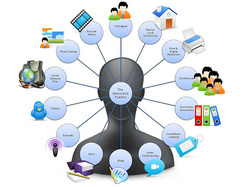- Our parents read book texts, enriched by illustrations and photos.In order to research they go to the school library, use the cart catalog for needed books, and sign up to borrow books for home reading. The technology or digital generation has greater affinity to visuals compared with texts.
LINEAR VERSUS HYPER MEDIA
- The past 30 years old generation has obtained information in a linear logical and sequential manner.On the positive side, this has made them more logical, focused, and reflective thinkers.
INDEPENDENT VERSUS SOCIAL LEARNERS
- The traditional education system gives priority to independent learning, prior to participative work. New learners, however, are already acquainted with digital tools that adopt both personal and participative work.
LEARNING TO DO VERSUS LEARNING TO PASS THE TEST
- Old teachers teach Students in order to help them past the test and complete the course requirement . n the other hand, The new digital learners simply wish to acquire skills, knowledge and habits as windows of opportunity afford them to learn.
RELATED REWARDS AND INSTANT GRATIFICATION
- The traditional reward system in education consists in the grades, honor certificates/ medals, and diplomas. On the other hand, digital learners on their own experience more immediate gratification through immediate scores from games.
ROTE MEMORY VERSUS FUN LEARNING
- Teachers feel obliged to delivering content based courses, the learning of which is measurable by standard texts. Digital learners prefer for learning which is relevant and instantaneously useful to them. Learning is play to new learners and not surprisingly there is which fun in the digital world outside the school.




























